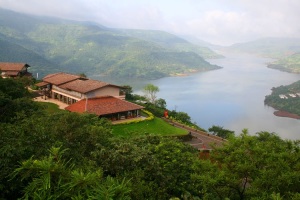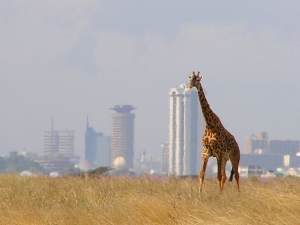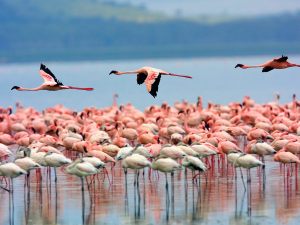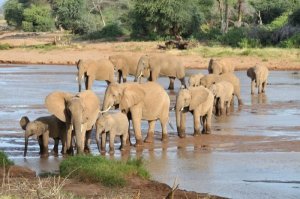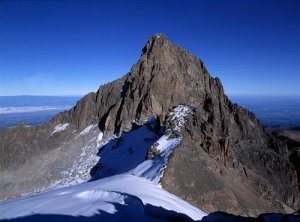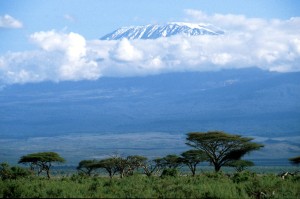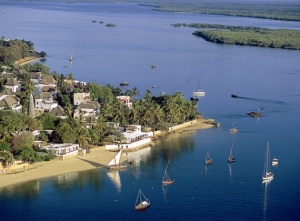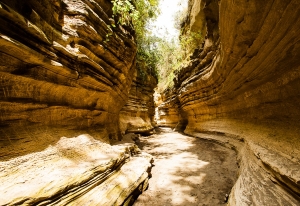Getting There
Colombo, situated one hour’s drive south of the Bandaranaike International Airport, is the largest metropolis on the island, stretching about 12 km along the coast from its southern beach suburb of Mount Lavinia to the Fort and inland to Kelaniya. The city's main roadway, Galle Road, is the main road south to the city of Galle and beyond. This makes Colombo a convenient resting point at the start or the end of your holiday. The best way to reach the town from the airport remains a private taxi. Useful drive times include: Colombo to Bentota (2 hours); Colombo to Galle (3.5 hours); Colombo to Kandy (3.5 hours); Colombo to Dambulla (4 hours).
Historical Background
Colombo is the commercial capital of Sri Lanka and lies alongside the present administrative capital, Sri Jayawardenepura, Kotte. Colombo’s port was influential as early as the 5th century when ships from Rome, Arabia, and China traded with Sinhalese kings for food supplies, spices and jewels. Colombo’s destiny changed over the centuries as many nations fought for dominance over the island’s valuable treasures including Arab settlers in the 8th century, followed by the Portuguese, the Dutch and, finally, the British who captured Colombo in 1796. This era of western domination ended peacefully with independence in 1948, followed by a separatist war fought by the LTTE (Liberation Tigers of Tamil Eelam) that lasted over two and a half decades, the affects of which were felt through out the country. Terrorism was eradicated from the Sri Lanka in May 2009 and peace continues to rain on the island once more. Through out it all, the city of Colombo has remained stable and comparatively safe and today’s two million population in the city represents a mix of cultures. Sinhalese, Moors, Tamils, Burghers (Dutch descendents), Chinese, and Malay populations all contribute towards the colourful fabric of Colombo society.
Sights
The city of Colombo is a blend of the old and the new. Seventeenth century buildings – some restored as hotels, shops, and government offices – stand side-by-side with the rest of Colombo’s modern skyline and rudimentary small shops. Several ancient Buddhist temples, Hindu Kovils, churches, and mosques are found in the heart of the city as well as in the suburbs. Museums, art galleries, golf courses and gyms, spas and salons, bars, restaurants, and nightclubs, all add to Colombo’s appeal.
Accommodation
Colombo offers a wide range of accommodation options from the five-star city hotels expected in an Asian capital to a clutch of interesting boutique hotels. There are mid-range city hotels, too, although the great value of the top-end hotels makes it hard for them to compete. There is a shortage of quality guesthouse accommodation in the centre of town. On the outskirts of the centre a couple of villas make a welcome change from standard hotels. The best city hotel is arguably Cinnamon Grand, reinvigorated by the John Keells Group. Their selection of restaurants is unrivalled. Trans Asia and the Hilton trail only marginally behind. Ceylon Continental, a friendly if more limited five-star on the seafront, offers outstanding value. The Galle Face Hotel, which now has a boutique-wing called The Regency, is the favourite for those wanting some colonial charm and a seaside location. Consider Colombo City Hotel as a simple, modern budget choice. If you are after a beach, though, Mount Lavinia Hotel is the only option. The boutique selection includes the stylish Tintagel, opened in 2008, Park Street Hotel run by the acclaimed Taru Villas Group and the eclectic CASA Colombo. For those looking for a villa ambience on the edge of town, choose form Havelock Place Bungalow, Villa Talangama and Java Moon. Mount Lavinia also offers two appealing houses: Mount Lavinia House and Mount Lodge.
Food & Drink
Food is a highlight of Colombo, much more so than you might imagine. You won’t go hungry here with its wide selection of small restaurants serving local hawker-style favourites like meat patties, fish buns, egg rolls, string hoppers, lamprais, kothu roti and biryani. All the local restaurants are extremely cheap. There is also a wide variety of fast food outlets, including McDonalds, Pizza Hut and KFC. Colombo is the best place in the island for Indian cuisine and the following are recommended: Agra, Mango Tree and Navaratna. For those looking for fusion or European-style food, there are some very special treats. For the quality of its food, especially its meats, Chesa Suisse, a Swiss restaurant, is outstanding. The most popular dining-out experience is at the Paradise Road Gallery Cafe, the restaurant with the most seductive ambience in the island. The owner of the Gallery Cafe, Shan Fernando, has also now opened Tintagel, a private hotel and restaurant that offers a more refined menu. For a more informal open-air dining experience, the Barefoot Cafe, managed by colourful celebrity chef Kollu, is popular and often has live jazz. The best seafood restaurant in the town is Lagoon at the Cinnamon Grand. The best Thai restaurant is the Royal Thai at Trans Asia. There is a huge selection of Chinese restaurants but we recommend two: No. 168 off the Galle Road, which is an authentic no-frills restaurant popular with the local Chinese community, and the Emperors Wok at the Hilton. If you are searching for authentic Sri Lankan food then choose from the Palmyrah Restaurant at Renuka Hotel, the Peninsula in Rajaigiriya suburbs, Hilton’s Curry Leaf and the iconic Green Cabin Restaurant on Galle Road. Colombo by night can be fun with a scattering of pubs and nighclubs that come alive especially on Friday and Saturday nights and features live bands or DJ music. H20, D’s, and Zetter are more popular with the younger lot. Bistro Latino, Rhythm & Blues, The Library at Trans Asia and Sugar located on top of H2O appeal to a more mature crowd. Characterful pubs include the Breeze Bar and Cheers Pub at Cinnamon Grand, Cricket Club Café, and Inn on the Green nearby Galle Face in Colombo.
Shopping
From buzzing bazaars to stylish boutique outlets, Colombo is increasingly becoming a popular shopping destination within Asia. Odels is Sri Lanka’s most famous shop, a growing department store in the centre of town. Western-label clothes are sold at a fraction of overseas prices. Other attractions include homewear stores like Paradise Road, Suriya and Gandhara. Saffron Villas is popular for antique furniture. Barefoot is famous for its handspun and vibrantly-coloured fabrics. There are several good quality jewellers. If you want to get a feel for the trading heart of the city, spend a hectic morning wandering the narrow streets of Pettah Bazaar where you will find anything from steel pots to the latest mobile phones. If you accept anybody’s offer to act as a guide, ensure you know the financial basis upon which this has been offered!
Events
Colombo’s streets come alive in January for the annual `Duruthu Perahara’ organised by the Kelaniya Temple and again in February for the `Navam Perehara’ organised by the Gangaramaya Temple. These processions display traditional folklore, music and the rhythmic dance forms. Dancers, drummers and flag bearers represent the different provinces. Chieftains in traditional attire and scores of elephants dressed in glittering cloaks are all a part of these colourful pageants. Vel, a Hindu festival that pays homage to Lord Murakan, takes place in July or August where an ornately decorated Vel chariot, drawn by a pair of snow-white bulls carrying the statue of Lord Murukan, parades the streets of Colombo. The chariot moves slowly while the drums throb, the bells tinkle, the Tanjore band plays and a "Bajan" gathering singing divine songs follow the chariot. The arts, sadly, remain largely inactive. The most popular event in Colombo’s art calendar is the Kala Pola (art fair) held in February which sees the shady sidewalks along Green Path filled with the creative works of local artists. Activities
Colonial architecture of Fort & Pettah
Colombo’s three-mile long rampart, cordoning off the area covered by today’s Fort and Pettah, was originally built in the sixteenth century by the Portuguese and then further developed by the Dutch and the British. Today, it is the commercial hub of the country, consisting of government offices, banks, five-star hotels and the country’s largest wholesale bazaar, which sells a huge range of items. In the Fort many of the old colonial buildings still stand alongside a slowly modernizing skyline.
Geoffrey Bawa Architecture
The late Geoffrey Bawa, Sri Lanka’s most influential architect, was responsible for linking the ancient architecture of this island with that of the modern world. Sri Lanka’s Parliament, which Bawa was commissioned to design, was created in the centre of a vast man-made lake. The building incorporates traditional Sri Lankan and South Indian architectural features with a series of pavilions with copper roofs. We also recommend a visit to the Paradise Road Gallery Café, formerly the studio of Geoffrey Bawa. His imprint still remains strong here with courtyards, ponds, walkways and open pavilions – spaces that inspired a creative genius.
Art Galleries
Permanent collections & temporary art exhibits of Sri Lankan artists are held regularly at the National Art Gallery, Sapumal Foundation, the Lionel Wendt, Barefoot Art Gallery and Paradise Road Gallery Café.
Music & theatre
Classical to contemporary forms of music in Sinhala, Tamil and English by local as well as foreign artists is available on CD at various music outlets in Colombo including ODEL, Barefoot, and Torana at Majestic City. Live performances featuring local jazz, pop, and folkrock artists take place at Rhythm & Blues, Barefoot or on a Sunday at the SSC club in Colombo 7. English theatre is limited, but there are occasional local productions that are interesting and usually take place at the Bishop’s College and British School auditoriums or the Lionel Wendt.
The National Museum
Colombo’s National Museum, established in 1877, is housed in an impressive colonial building in the heart of the city surrounded by extensive gardens. The museum comprises several galleries dedicated to Sri Lanka’s history and cultural heritage, literature, coins, rock sculptures from the ancient cities, period furniture, artistic theatre traditions, as well as a museum of Natural History. The National Museum is closed on Fridays.
Dutch Period Museum in Pettah
The Dutch Period Museum is housed in the old Dutch House, built by Count August Carl Van Ranzow in the latter part of the 17th century. The museum provides an insight into the Dutch period in Sri Lanka and houses artifacts including furniture, ceramics, coins and photographs. The museum is closed on Fridays.
Kelaniya Temple
The ancient Kelani Raja Maha Viharaya, situated six miles from Colombo, stands alongside the Kelani River. According to the Mahavamsa, Lord Buddha stopped at this ancient temple during a visit to Sri Lanka in 523 BC where he was invited to preach at the invitation of the king. The Buddha sat and preached on a gem-studded throne on which the Buddha sat and preached. This temple is also famous for its image of the reclining Buddha and paintings, which depict important events in the life of the Buddha and history of Buddhism in Sri Lanka.
Bellanwilla Temple
Bellanwila Raja Maha Viharaya, located close to Mount Lavinia, has a long and hallowed history. The great sanctity attached to this temple is due to its sacred Bo Tree, which according to ancient texts is one of the thirty two saplings that sprang from the sacred Bo tree at Anuradhapura, planted in the 3rd century B.C. This ancient Buddhist temple houses elaborate statues of Buddha and frescoes depicting his life.
Hindu Kovils
The city of Colombo has several Hindu Kovils with colourful and ornate statues and shrines dedicated to different gods and deities. A visit to a kovil, especially during the time of a pooja (ritual offering devotion to the gods), is a special experience with the clanging of bells, chanting of prayers and intoxicating smell of oil lamps and incense. The New and old Kathiresan Kovils dedicated to God Skanda, the god of war and victory, are located in Pettah. The oldest kovil in Colombo is the Sri Kailawasanthan Swami Devasthanam.
Churches built during Colonial period
St. Peter’s Church near the Grand Oriental Hotel in Fort was previously a Dutch Governor's banquet Hall until first used as a church in 1804. St. Andrew’s Scots Kirk built in 1842 is located on Galle Road next to Cinnamon Grand. Wolvendaal Church (Colombo’s oldest Dutch Church) is in Fort.
Royal Colombo Golf Club
Royal Colombo, built in 1879, is a welcome escape from the hectic city centre. Located in Borella, a short distance from central Colombo, the course is a green oasis accompanied by a clubhouse of colonial charm. Listen to your attentive caddie to avoid the numerous water hazards. Despite being in the centre of Colombo, the course maintains its tranquillity, although the occasional commuter train running along the 6th fairway can prove hazardous.
Cycling Colombo to Negombo
If you are looking for a challenge, jump on a mountain bike and take the coastal route to Negombo. Leaving early in the morning from near Colombo docks, the route quickly takes you away from the busy roads and into the communities of the Colombo suburbs. It is a fascinating transition from the commercial hub of Colombo, exploring some of the cities poorer communities before cycling through the fishing villages of this untouristy coastline. A three-hour ride brings you to Negombo, a vibrant fishing port and holiday centre. Lunch well in Negombo before retracing your steps – or hiring a minivan from Red Dot to collect you.
Rock climbing & caving
Hideaway, a small boutique villa in Wathuregama, offers abseiling and caving in the surrounding natural caves and rock faces. State of the art safety equipment including helmets, headlight torches, abseiling equipment and experienced guides are provided by the hotel. This activity is only for guests of Hideaway and prior notice is required.
Spa
The Angsana City Club and Spa of the Cinnamon Grand is a luxurious facility providing a range of Ayurvedic and aromatherapy massages and treatments, a fully-equipped gym and roof terrace swimming pool. Crown Saloon, also centrally located, provides Aromatherapy spa treatments as well as beauty and salon facilities. The Water’s Edge Golf & Country Club’s Aryana Spa overlooks the magnificent vistas across the golfing green. This spa features a menu of Balinese, Thai and Ayurvedic relaxing and rejuvenating treatments. The Sanctuary Spa, opened in 2002, in the heart of Colombo city, is a day spa where clients can spend the entire day or just pop in at lunchtime. Red Dot clients get a small discount.
Ayurveda
The Siddhalepa Ayurveda Centre offers holistic wellbeing based on the ancient healing wisdom of Ayurveda through their centres located in Dehiwala and Wijerama Mawatha in Colombo 7. The history of Siddhalepa on this island dates back to 200 years with generations of the owning Hettigoda family playing a vital role in promoting the philosophy of Ayurveda in the country.
Yoga
Regular Yoga sessions are offered in some of the gyms in Colombo including the Hilton Residencies Sports Center, Global Fitness Gym in Colombo 5 and the Lifestyles Gym in Colombo 7.
Meditation
Several Buddhist centres in Colombo conduct guided meditation sessions and Buddhist discussions. These include Vishva Niketan International Peace Centre, Sarvodaya, the International Vipassana Meditation center down Wijerama Mawatha in Colombo 7, Vajiraramaya temple in Bambalapitiya and the International Buddhist Research & Information center (IBRIC) located at the Naradha Centre in Colombo 7. Books, DVDs and recorded audio tapes on Buddhist teachings are also available in some of these Centres.
Colombo area wetlands
The Diyawanna Oya and Talangama wetlands located in the Kotte suburbs offer opportunities for bird watching. These areas are a combination of tanks, canals and paddy fields which have recently been declared as protected natural areas and are supported by the Field Ornithology Group of Sri Lanka. Further south, in the suburbs of Piliyandala, is the Bolgoda Lake, Sri Lankan largest natural fresh water basin. Many species of birds, butterflies, monitor lizards and monkeys can be spotted in this area.
Gampaha’s ancient rock temples and wilderness
The ancient Maligathanne temple and the Pillikuttuwa temples dating back to over 2,000 years are situated in the suburbs in Gampaha about 45 minutes from the main city centre. The Pillikuttuwa temple and its surrounding wilderness covers an area of around 200 acres and consists of a natural forest reserve and several caves. The Maligathanne temple is perched on a two tiered rock that is considered the highest point in the Colombo district with panoramic views. King Valagamba built the rock temple to safeguard the sacred tooth relic which is now enshrined in Kandy’s Temple of the Tooth. Situated over an area of about 65 acres, Maligathanne has 20 caves to explore.
Sri Lanka’s traditional dance
Traditional dance in Sri Lanka is associated with rituals and ceremonies intended to expel sickness and misfortune as well as evoke blessings during auspicious occasions. There are several dance forms including Kandyan (up country), Sabaragamuwa (central province), Ruhunu (low country). Each of these differs in dress, rhythm of the drums, dance movements, and folk songs. Sri Lanka’s Tourism ministry organises dance performances each Friday at 5:30 pm at the Hotel School Auditorium, 78 Galle Road, Colombo 3. This auditorium is situated right opposite the Cinnamon Grand hotel and nearby several other hotels in the Galle Fort area.
Colombo city walks
Take a stroll through the city of Colombo and experience this vibrant and yet laid back capital city with its mix of ethnic communities living; centuries old colonial period architecture to contemporary Bawa architecture; and road side eateries and restaurants serving a variety of local foods and beverage. Personalised Colombo city walks are now on offer and will take up to three to four hours. The walks are conducted in the evening-time when it’s less humid. The rate includes entry permits, hosting fee, food and beverages while on walk as well as a complimentary beer/wine at the end of the walk. Group of up to six guests are accommodated on this personalized experience. For those preferring to omit the walk and do only a drive through Colombo, there is also a `Colombo City night-drive’ on offer.



